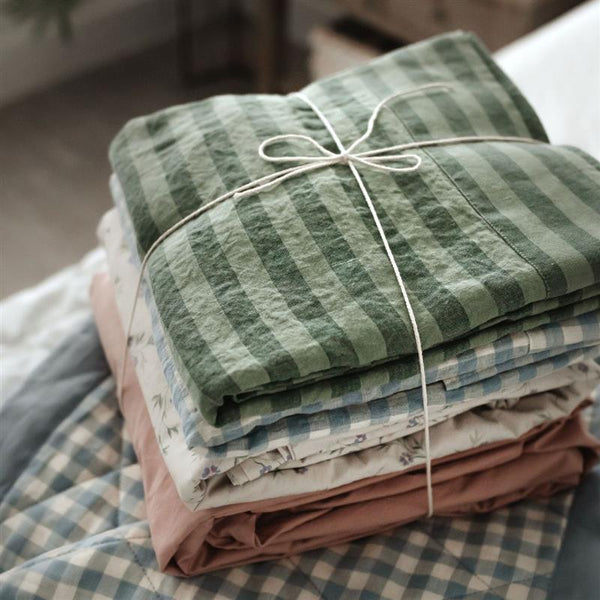Your bed is your sleep sanctuary, the place where you retreat to relax, unwind, and rejuvenate, so it’s important to keep it feeling comfortable, fresh, and, most importantly, clean. After all, a clean space means a clear mind, and we want to start and end the day with exactly that.
The regularity with which you should replace your bedding is somewhat of a grey area - with various contradicting claims floating around. So we’re here to debunk any myths and give you insider intel on exactly how often you should be replacing your bedding to ensure the best night’s sleep, every night.
Why should I replace my bedding?
As you sleep, your body sheds skin cells, sweat and oils, which accumulate on your sheets and pillowcases, and, over time, seep into the bedding itself - your duvet, pillows and mattress.
Without regular washing or replacement, bedding can become a breeding ground for bacteria, dust mites and other allergens. Replacing your bedding will ensure that your bed continues to be the comfiest and cosiest place you know, as well as optimum health, hygiene and better-quality sleep.
Mattress
Let’s start with undoubtedly the most important part of your bed, the mattress. Spending a third of our lives asleep in bed, a high-quality mattress is one of the best investments you can make at home, and knowing how to care for it in the right way is key to its longevity.
Mattresses typically have a lifespan of seven to ten years, depending on the quality and materials. We recommend investing in a mattress that contains natural wool rather than synthetic materials. Wool naturally regulates body temperature and moisture, helping to keep you cool in the summer and cosy in the winter. It’s also naturally antibacterial, making it an ideal fibre for a mattress.

To prolong the life of your mattress, we recommend using a mattress protector to protect it from spills and stains, flipping and rotating your mattress seasonally, airing it out daily or weekly and giving it a non-invasive clean every other month. You can read a more detailed guide on caring for your mattress here.
Pillows
Absorbing the majority of the moisture we breathe and sweat, as well as the product we lather our hair and skin with each night, it’s no surprise that experts advise we replace our pillows as often as every one to two years. In between replacements, there are a number of things you can do to keep your pillows plump and to ensure their lifespan reaches that two-year mark.
Most pillows can be washed in a machine two to four times a year on a low heat and gentle cycle, but it's always best to check their label before doing so. For pillows filled with Merino wool like ours, the best way to keep them clean, fresh, bacteria and toxin-free is to air them in the sunshine on the washing line at least four times a year.

The sunshine sterilises the wool and cotton, and the warmth of the sun will encourage any moisture trapped within the wool to be wicked away. Oh how we love Mother Nature!
Airing them out also encourages the fibres of the wool to naturally expand back out, ensuring that the pillows and duvets are revitalised and bounce back to life. Ahead of the summer season, refer to our pillow care journal feature for more Piglet top tips!
Bed Linens
Let’s face it, we’re all guilty of washing and replacing our bedding less than we ideally should, promising ourselves we’ll do it tomorrow before forgetting and crashing into bed for yet another night.
At Piglet we encourage you to find joy in the slow moments, practising the little things that boost your serotonin - why not make a bedding changeover part of your Sunday night routine? What’s better than starting the week on a good night’s sleep, waking up in fresh, sumptuous bed linens? Us Piglets think there’s truly no better feeling.

To keep the germs at bay, it is recommended that we wash our sheets, pillow cases and duvet covers once or twice a fortnight, and replace them with new ones every three to five years.
Luckily, linen and percale cotton are both incredibly durable and long-lasting natural materials, so they are unlikely to pill or thin during this time if cared for in the right way. Refer to product pages and care labels for care instructions or head to our journal guides for more thorough tips, tricks and explanations.































